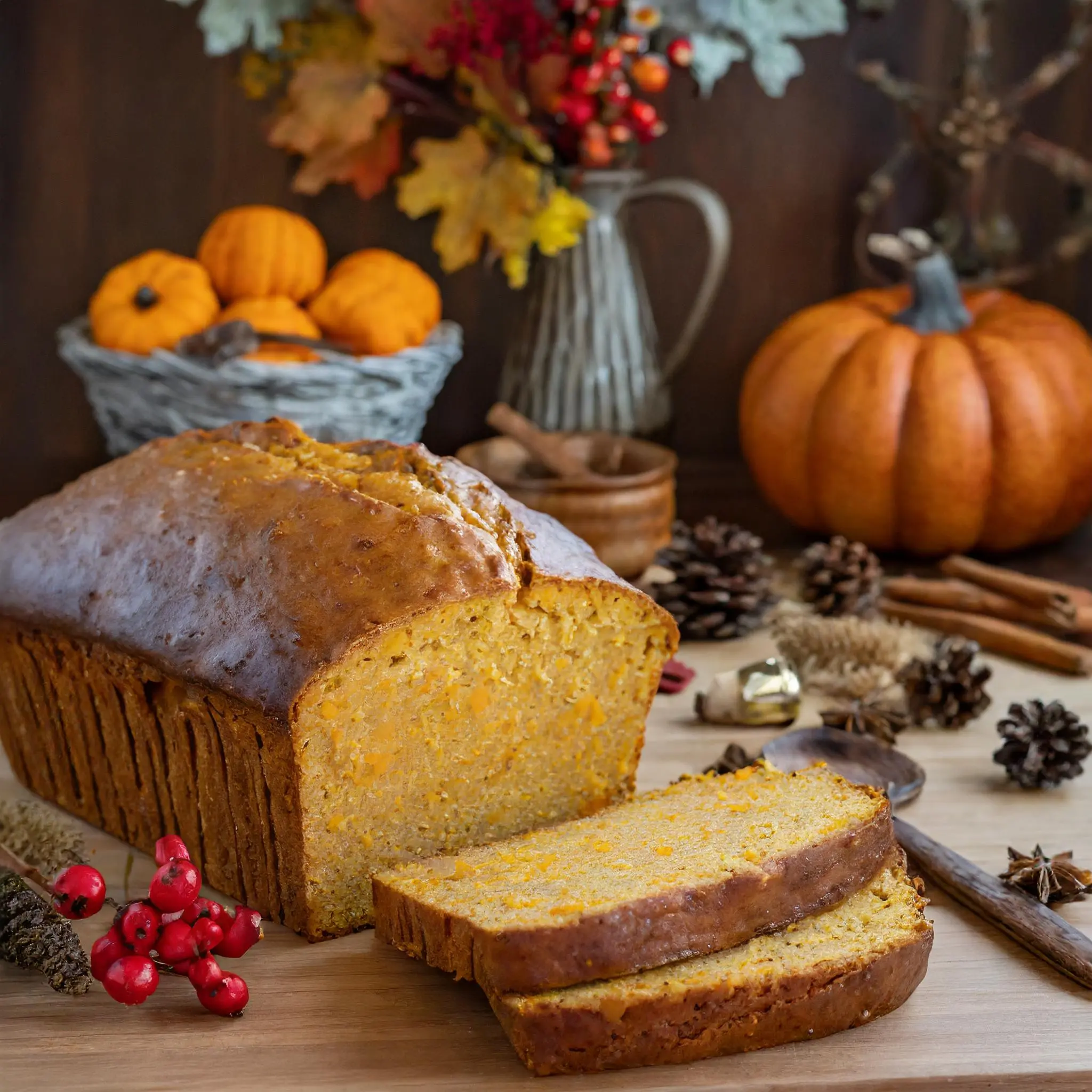Pumpkin bread is a beloved homemade treat that perfectly captures the essence of autumn. Its warm spices, moist texture, and delightful sweetness make it a staple for cozy mornings, festive gatherings, or as a simple snack with your favorite beverage. Whether you’re a seasoned baker or a beginner, this delicious loaf is easy to make and endlessly versatile, offering a canvas for both traditional and creative twists.
The charm of pumpkin bread lies in its ability to evoke a sense of comfort and nostalgia. Made with pumpkin purée and a blend of spices like cinnamon, nutmeg, and cloves, it’s the ultimate way to enjoy the flavors of fall. But beyond its seasonal appeal, pumpkin bread is a year-round favorite, thanks to its adaptability and simplicity.
In this article, you’ll learn about the origins of pumpkin bread, the essential ingredients, and step-by-step instructions to create the perfect loaf. You’ll also find expert tips for enhancing its flavor, storing it for longer enjoyment, and even experimenting with fun variations. Let’s embark on this flavorful journey and master the art of making pumpkin bread from scratch!
Table of contents
The Origins and Ingredients of Pumpkin Bread
The Origins of Pumpkin Bread
Pumpkin bread has a rich history rooted in the culinary traditions of harvest seasons. Pumpkins, native to North America, have been a key ingredient in indigenous diets for centuries, providing nourishment and versatility. Early settlers adopted pumpkin in their recipes, combining it with flour, eggs, and natural sweeteners like honey or molasses to create early versions of pumpkin-based baked goods.
The concept of pumpkin bread as we know it today emerged more prominently in the 20th century, fueled by the availability of canned pumpkin purée. This innovation made the preparation process easier and more consistent, ensuring a smooth texture and robust flavor. Pumpkin bread became especially popular as a fall tradition, celebrated in homes across the United States and beyond. Today, it stands as a symbol of warmth, family gatherings, and seasonal indulgence.
Ingredients for Pumpkin Bread
One of the reasons pumpkin bread is so universally loved is the simplicity of its ingredients. Below is a list of essential components and the roles they play in creating the perfect loaf:
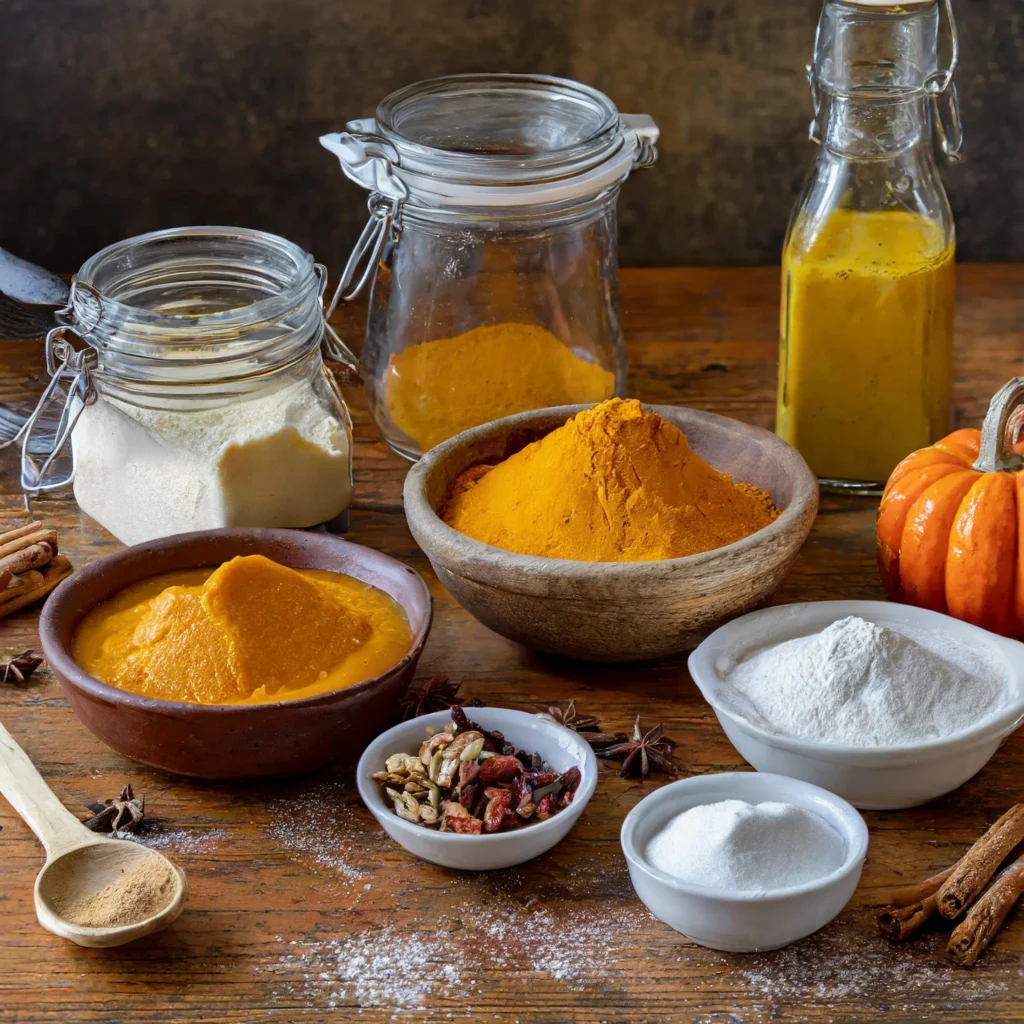
The Key Ingredients
- Pumpkin Purée
- Why It’s Important: The star ingredient provides moisture, natural sweetness, and a subtle earthiness to the bread.
- Alternatives: Homemade pumpkin purée or sweet potato purée can be used as substitutes.
- Flour
- Why It’s Important: All-purpose flour creates the structure of the bread.
- Alternatives: For a healthier option, try whole wheat flour, or for gluten-free baking, use almond or oat flour.
- Sugar
- Why It’s Important: Granulated sugar and/or brown sugar add sweetness and contribute to the moist texture.
- Alternatives: Coconut sugar or maple syrup for natural sweetness.
- Eggs
- Why It’s Important: Eggs bind the ingredients and help the bread rise.
- Alternatives: Use flaxseed meal or applesauce for vegan options.
- Butter or Oil
- Why It’s Important: Fat enhances the bread’s richness and moisture.
- Alternatives: Coconut oil, olive oil, or unsweetened applesauce can be used.
- Spices
- Why It’s Important: A combination of cinnamon, nutmeg, ginger, and cloves adds the quintessential fall flavor.
- Alternatives: Pumpkin pie spice for convenience or experiment with allspice for a unique twist.
- Baking Soda and Baking Powder
- Why It’s Important: These leavening agents ensure the bread rises properly.
- Vanilla Extract
- Why It’s Important: Adds depth to the flavor profile.
- Optional Add-Ins
- Chocolate chips, nuts, or dried fruits can elevate the texture and taste.
Ingredient Tips for Best Results
- Freshness Matters: Use fresh spices for a robust aroma and flavor.
- Pumpkin Quality: Opt for high-quality canned pumpkin purée or prepare your own for an authentic taste.
- Balancing Sweetness: Adjust sugar levels based on your preference and whether you plan to serve it plain or with spreads.
Preparing Your Kitchen and Step-by-Step Baking Guide
Preparing Your Kitchen
Before diving into the baking process, proper preparation is key to ensuring a smooth and enjoyable experience. Organizing your tools, pre-measuring ingredients, and setting up your workspace will save you time and prevent mishaps.
Essential Tools and Equipment
- Mixing Bowls
- At least two mixing bowls (one for wet ingredients and one for dry).
- Measuring Cups and Spoons
- Accurate measurements are crucial for baking success.
- Whisk and Spatula
- A whisk for mixing dry ingredients and a spatula for folding wet and dry ingredients together.
- Loaf Pan
- A standard 9×5-inch loaf pan ensures even baking.
- Alternative: Muffin tins or mini-loaf pans for individual portions.
- Parchment Paper or Non-Stick Spray
- To prevent sticking and make cleanup easier.
- Oven Thermometer
- Ensures your oven is at the correct temperature for consistent baking results.
Preparation Tips
- Preheat the Oven: Always preheat your oven to 350°F (175°C) to allow even baking from the start.
- Grease the Pan: Line your loaf pan with parchment paper or grease it with butter or non-stick spray.
- Room-Temperature Ingredients: Bring eggs and butter to room temperature for easier mixing and better texture.
- Sift Dry Ingredients: Sifting flour and spices ensures they are evenly distributed and lump-free.
Step-by-Step Baking Guide
Follow this foolproof process to create a loaf of pumpkin bread that’s golden, moist, and bursting with flavor.
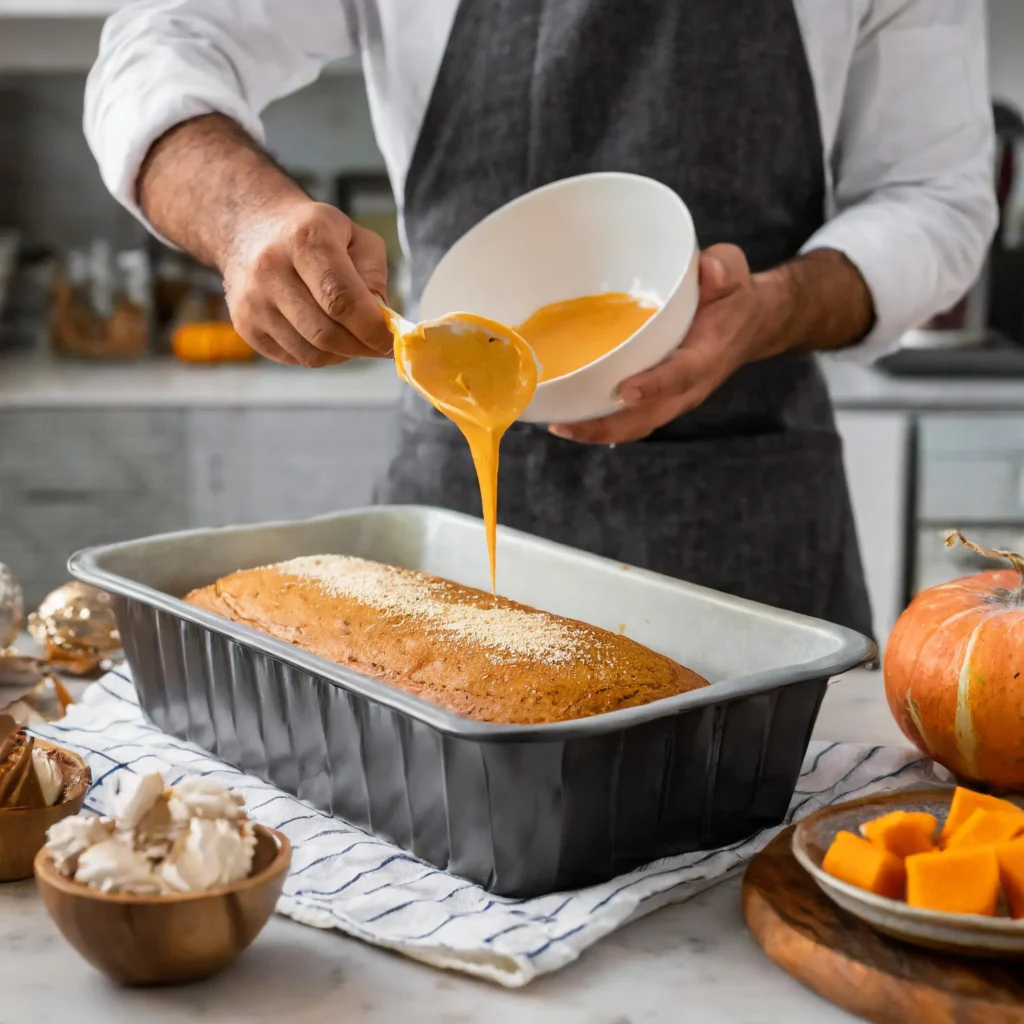
1: Combine Dry Ingredients
In a large mixing bowl, sift together:
- 1 ¾ cups of all-purpose flour
- 1 teaspoon baking soda
- ½ teaspoon baking powder
- 1 teaspoon ground cinnamon
- ½ teaspoon ground nutmeg
- ¼ teaspoon ground ginger
- ¼ teaspoon ground cloves
- ½ teaspoon salt
Whisk the dry ingredients thoroughly to combine the spices evenly.
2: Mix Wet Ingredients
In a separate bowl, beat together:
- 1 cup pumpkin purée
- ¾ cup granulated sugar
- ½ cup brown sugar
- 2 large eggs
- ½ cup vegetable oil or melted butter
- 1 teaspoon vanilla extract
Whisk until the mixture is smooth and well-blended.
3: Combine Wet and Dry Ingredients
- Gradually add the dry ingredients to the wet mixture.
- Use a spatula to fold the ingredients together gently. Avoid overmixing, as this can make the bread dense.
4: Add Optional Ingredients
- Stir in ½ cup of chocolate chips, chopped nuts, or dried cranberries for extra flavor and texture.
5: Transfer to the Pan
- Pour the batter into the prepared loaf pan, spreading it evenly with a spatula.
6: Bake
- Place the pan in the preheated oven and bake for 50-60 minutes.
- Test for doneness by inserting a toothpick into the center. If it comes out clean or with a few crumbs, it’s ready.
7: Cool and Serve
- Let the loaf cool in the pan for 10 minutes.
- Transfer it to a wire rack to cool completely before slicing.
Secrets to Perfect Pumpkin Bread and Nutritional Value
Secrets to Perfect Pumpkin Bread
Crafting the ideal pumpkin bread requires attention to detail and a few insider tricks to elevate your baking. Here are some expert tips to ensure your loaf is moist, flavorful, and irresistibly good.
Tips for Moistness
- Don’t Overmix: Overmixing the batter can lead to a dense and dry loaf. Mix just until the ingredients are combined.
- Use Oil Instead of Butter: While butter adds flavor, oil ensures a moister texture. You can use vegetable, canola, or even coconut oil.
- Add Greek Yogurt or Applesauce: Replacing some of the oil with yogurt or applesauce boosts moisture without altering the flavor.
Enhancing the Flavor
- Fresh Spices: Use freshly ground spices for a more robust and aromatic flavor.
- Brown Sugar: Incorporate brown sugar for a richer, caramel-like sweetness.
- Vanilla Extract: Add an extra teaspoon of vanilla for depth and complexity.
Avoiding Common Mistakes
- Uneven Baking: Rotate the pan halfway through baking to ensure even heat distribution.
- Sunken Middle: Avoid opening the oven door too early, as this can cause the center to collapse.
- Sticking to the Pan: Always grease the pan well or use parchment paper for easy removal.
Making It Your Own
- Experiment with mix-ins like shredded coconut, white chocolate chips, or pumpkin seeds for a unique twist.
- Top the batter with a streusel or glaze for a bakery-style finish.
Nutritional Value of Pumpkin Bread
Pumpkin bread is not only delicious but also packs a nutritional punch thanks to its star ingredient—pumpkin. Here’s a breakdown of its key benefits and how to make it healthier.
Caloric Breakdown
A typical slice of pumpkin bread (about 1-inch thick) contains:
- Calories: 150-200
- Fat: 6-8 grams
- Carbohydrates: 25-30 grams
- Protein: 2-3 grams
Health Benefits of Pumpkin Bread
- Rich in Vitamins: Pumpkin is an excellent source of vitamin A, which supports vision and immune health.
- High in Fiber: Both pumpkin and whole grains (if used) contribute to dietary fiber, aiding digestion.
- Antioxidants: Spices like cinnamon and nutmeg contain antioxidants that combat inflammation.
How to Make It Healthier
- Use Whole Wheat Flour: Swap some or all of the all-purpose flour with whole wheat flour for added nutrients.
- Reduce Sugar: Cut back on sugar or use natural sweeteners like honey or maple syrup.
- Add Superfoods: Incorporate chia seeds, flaxseeds, or nuts to boost the bread’s nutritional profile.
Pumpkin Bread Variations and Storage Tips
Pumpkin Bread Variations
One of the best things about pumpkin bread is its versatility. You can stick to the classic recipe or get creative with variations that suit your taste or dietary preferences. Here are some exciting twists to try:
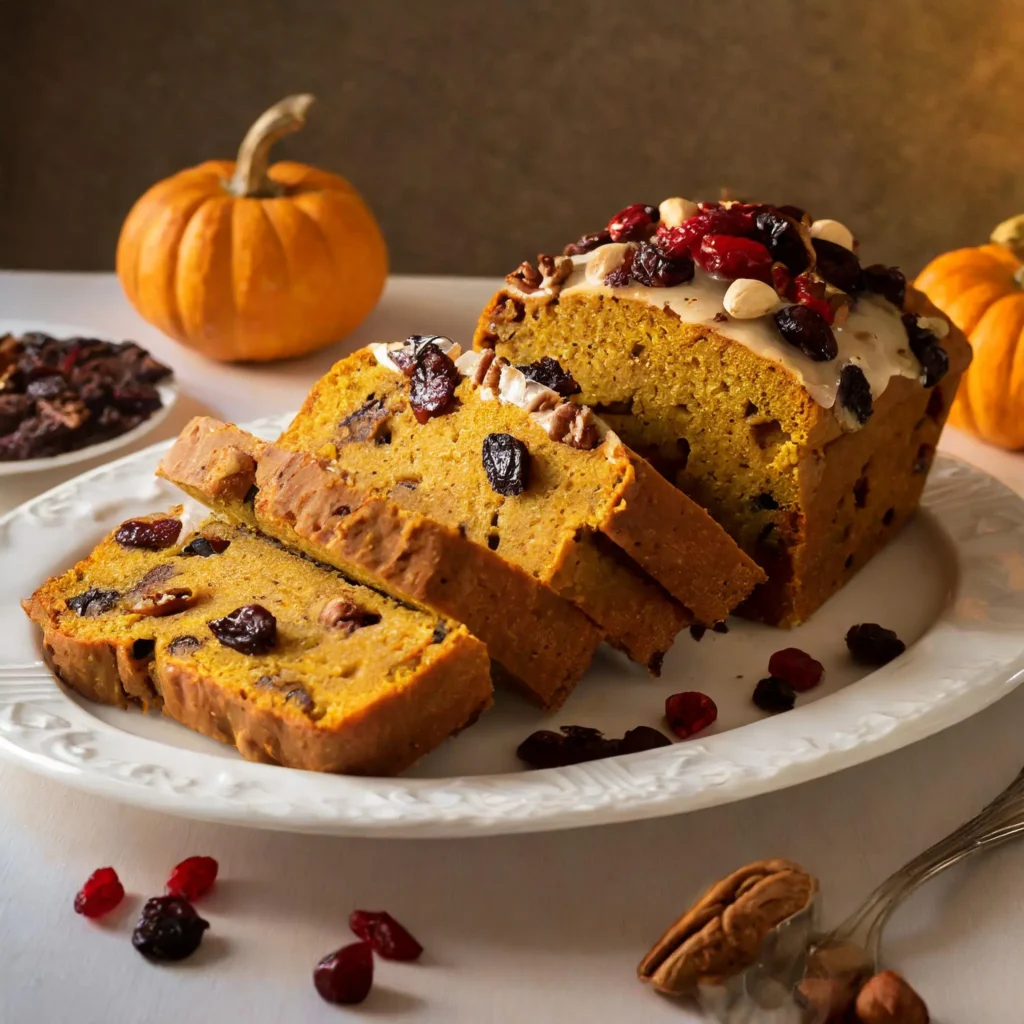
Classic Add-Ins
- Chocolate Chip Pumpkin Bread
- Fold in ½ to 1 cup of semi-sweet or dark chocolate chips for a delightful sweetness.
- Nutty Pumpkin Bread
- Add ½ cup of chopped walnuts, pecans, or almonds for a crunchy texture.
- Dried Fruit Mix-Ins
- Include raisins, dried cranberries, or chopped dried apricots for a chewy, fruity twist.
Dietary Variations
- Gluten-Free Pumpkin Bread
- Substitute all-purpose flour with a gluten-free flour blend.
- Ensure your leavening agents and other ingredients are certified gluten-free.
- Vegan Pumpkin Bread
- Replace eggs with flax eggs (1 tablespoon ground flaxseed mixed with 3 tablespoons water for each egg).
- Use plant-based milk and coconut oil or vegan butter.
- Low-Sugar Pumpkin Bread
- Reduce sugar by half and add a natural sweetener like stevia, monk fruit, or honey.
Creative Twists
- Pumpkin Cream Cheese Bread
- Create a cream cheese swirl by layering a sweetened cream cheese mixture in the batter before baking.
- Pumpkin Spice Latte Bread
- Add a teaspoon of instant coffee powder for a latte-inspired flavor.
- Savory Pumpkin Bread
- Skip the sugar and spices; add grated cheese, herbs, and garlic for a savory option.
Pumpkin Bread Storage Tips
Pumpkin bread is best enjoyed fresh, but proper storage can help you savor it for days. Here’s how to keep it fresh and flavorful:
Short-Term Storage
- Room Temperature: Wrap the cooled loaf tightly in plastic wrap or store it in an airtight container. It will stay fresh for 2-3 days.
- Reheating: If the bread dries out slightly, microwave slices for 10-15 seconds to restore moisture.
Long-Term Storage
- Freezing:
- Slice the loaf for convenient portions. Wrap individual slices in plastic wrap and store them in a freezer bag.
- Pumpkin bread can be frozen for up to 3 months.
- Thawing:
- Let slices thaw at room temperature or microwave them on low heat.
Tips for Optimal Freshness
- Avoid Refrigeration: Refrigerating pumpkin bread can dry it out. Store at room temperature or freeze instead.
- Use Airtight Containers: Keep air exposure to a minimum to retain moisture and flavor.
- Label Freezer Bags: Note the freezing date to ensure you use the bread within its best timeframe.
Pumpkin Bread for Holidays
Pumpkin bread shines during the holiday season, offering a delightful treat that’s easy to share and customize. Whether as part of a festive feast or a thoughtful gift, it’s a staple for creating memorable holiday moments.
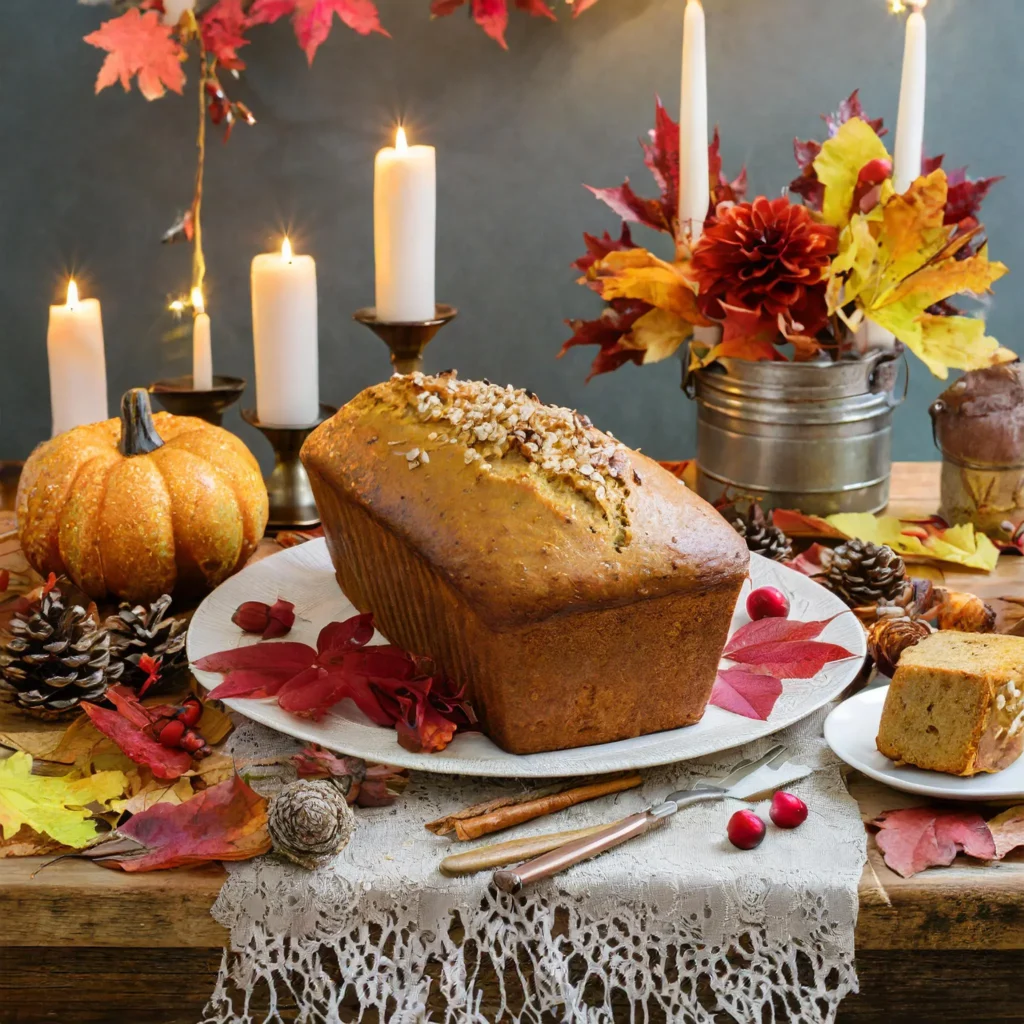
Serving Pumpkin Bread During Celebrations
- Holiday Breakfast or Brunch
- Serve slices alongside coffee, tea, or hot cocoa for a cozy holiday morning.
- Pair with cream cheese or spiced butter spreads for added indulgence.
- Dessert Table Addition
- Include pumpkin bread on your dessert table alongside pies, cookies, and cakes.
- Top with whipped cream or a drizzle of caramel sauce for an elegant finish.
- DIY Holiday Gifts
- Bake mini-loaves and package them in festive wrapping with a handwritten note.
- Customize flavors to suit the recipient’s preferences, such as chocolate chip or nut variations.
Festive Pumpkin Bread Ideas
- Pumpkin Bread Centerpiece
- Use a bundt pan for a decorative shape, then dust with powdered sugar for a festive look.
- Holiday Spices Blend
- Add cardamom, star anise, or a pinch of black pepper for a holiday-inspired twist.
Pumpkin Bread FAQs
1. Can I Use Fresh Pumpkin Instead of Canned Pumpkin?
Yes, you can use fresh pumpkin. Roast and purée the pumpkin until smooth, and use the same amount as canned pumpkin. Be sure to strain the purée if it’s too watery.
2. Why Is My Pumpkin Bread Dry?
Overmixing the batter or overbaking the loaf can cause dryness. Ensure you mix until just combined and check for doneness a few minutes before the recommended bake time.
3. How Do I Make Pumpkin Bread More Moist?
Adding an extra egg, using oil instead of butter, or incorporating a dollop of Greek yogurt or applesauce can enhance moisture.
4. Can I Freeze Pumpkin Bread?
Absolutely! Slice the loaf, wrap individual pieces tightly in plastic wrap, and store them in a freezer bag for up to three months.
5. What Can I Use Instead of Eggs?
Flax eggs, applesauce, or mashed bananas are great substitutes for eggs in pumpkin bread, making it vegan-friendly.
6. Can I Make Pumpkin Bread Without Sugar?
Yes, reduce sugar or use natural sweeteners like honey, maple syrup, or stevia for a low-sugar version.
Conclusion
Pumpkin bread is more than just a recipe—it’s a cherished tradition that brings warmth, flavor, and joy to any table. Whether you’re baking it for a quiet weekend treat, a festive holiday celebration, or as a heartfelt gift, the possibilities are endless.
From mastering the classic recipe to experimenting with creative variations, pumpkin bread offers a delicious and rewarding baking experience. With the tips, tricks, and ideas shared in this guide, you’re now equipped to bake the perfect loaf every time.
So, gather your ingredients, preheat your oven, and enjoy the journey of creating your very own pumpkin bread masterpiece. Happy baking!

